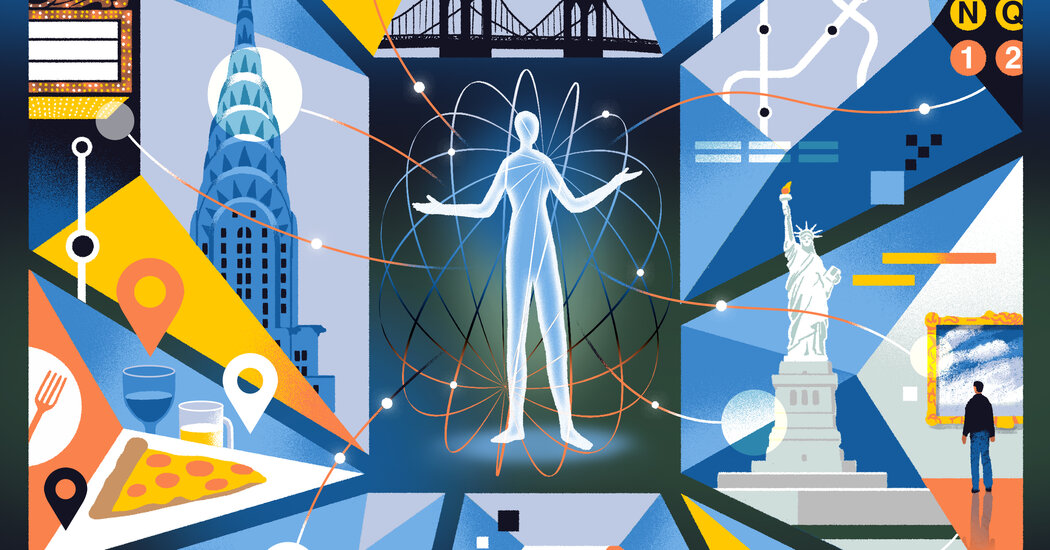
A “Friday evening matinee?” To quote the Gershwins, it ain’t necessarily so. But that’s how modern artificial intelligence suggested I hit Broadway.
When I was asked to see what A.I. gets right and wrong about visiting New York City, I was deeply curious and felt well qualified for the assignment — I’ve been a resident of Manhattan since 1989, a frequent city tour guide for friends and family, and a journalist who has written about technology (including chatbots) since the 1990s.
I sampled several A.I.-planner sites with the same vacation request: Create an itinerary for a trip for two people to New York City from April 17 to 20 that suggests an affordable hotel (less than $250 a night) in the middle of the city, several iconic landmarks or museums, a matinee performance of an award-winning Broadway show and a great pizza stop. I asked for directions for accessible ways to get to each place from the hotel, and then made additional requests for suggestions if children were coming along.
While most of the sites offered many of the same classic New York spots, like the Museum of Modern Art, the user experience varied. (Note that all the sampled sites use OpenAI’s software in some way and The Times has an active copyright-infringement lawsuit against OpenAI.) If you are new to the world of A.I. travel planners, here are a few that may appeal to certain types of human travel planners.
If you want a friendly interface
With its energetic home page full of photos and features, Mindtrip (free) felt like the most welcoming A.I. planner for a newcomer. Its initial itinerary hit most of the top tourist stops, like the Statue of Liberty, the Metropolitan Museum of Art and Central Park, with links to the sites’ suggested highlights. Mindtrip also suggested the Pod 51 hotel on East 51st Street (about $303 a night), which is a great location, but rooms in the Pod chain aim for “chic minimalist,” which may not be for everyone, particularly families.
